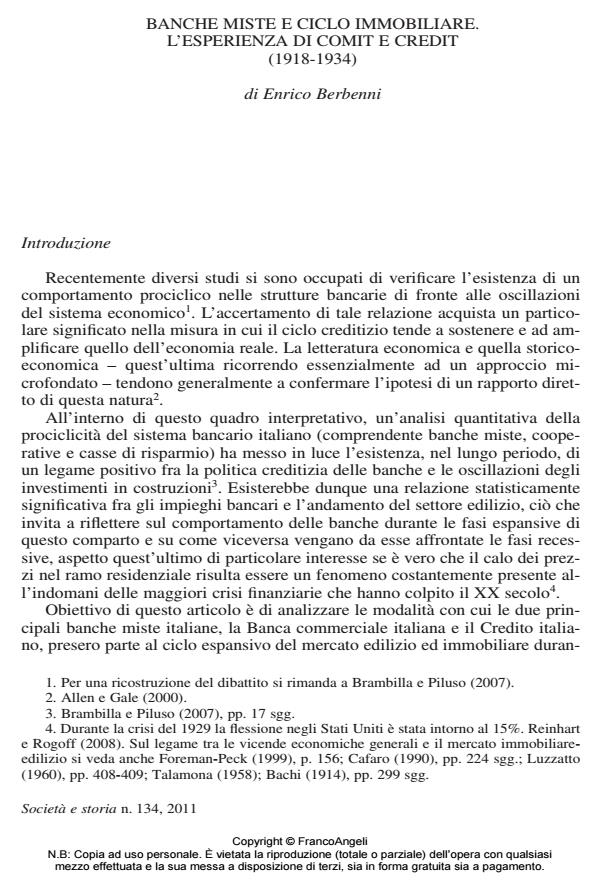Banche miste e ciclo immobiliare. L’esperienza di Comit e Credit (1918- 1934)
Journal title SOCIETÀ E STORIA
Author/s Enrico Berbenni
Publishing Year 2012 Issue 2011/134
Language Italian Pages 28 P. 741-768 File size 526 KB
DOI 10.3280/SS2011-134006
DOI is like a bar code for intellectual property: to have more infomation
click here
Below, you can see the article first page
If you want to buy this article in PDF format, you can do it, following the instructions to buy download credits

FrancoAngeli is member of Publishers International Linking Association, Inc (PILA), a not-for-profit association which run the CrossRef service enabling links to and from online scholarly content.
This research investigates the role played by the two major Italian universal banks during the growth of the building and real estate sector in the twentiesof the XXth century. It also focuses on how they reacted to the next crisis, highlighting the differences between the two institutions in the way they operated on the market. These banks had already invested in this sector but it was in the twenties that their intervention was structured in a more comprehensive way. Hence, they were able to take advantage of the opportunities induced by a growing market, even if they were subsequently forced by the changed economic framework to reorganize their portfolio of real estate shareholdings. The financial support granted during the economic crisis seems to suggest that Comit and Credit adopted a counter-cyclical behaviour, which however did not prove su- stainable in the longer term due to the broader banking crisis and to the following advent of Iri.
Keywords: Universal Banks, Banca commerciale italiana, Credito italiano, Building Sector, Real Estate Market, Economic Cycle.
- La storia economica contemporanea in quaranta anni di "Società e storia" Marco Doria, in SOCIETÀ E STORIA 178/2023 pp.783
DOI: 10.3280/SS2022-178007
Enrico Berbenni, Banche miste e ciclo immobiliare. L'esperienza di Comit e Credit (1918-1934) in "SOCIETÀ E STORIA " 134/2011, pp 741-768, DOI: 10.3280/SS2011-134006